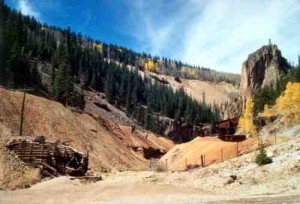Brief by Central Staff
Communications – July 2006 – Colorado Central Magazine
Much of Central Colorado and the San Luis Valley were disconnected from the rest of the world for five hours on the afternoon of May 31.
According to Qwest Communications, a construction worker cut a fiber-optic cable between Pueblo and Walsenburg. Long-distance and Internet service were lost in Salida and Buena Vista, and many areas in the San Luis Valley lost 911 emergency service as well. Most cellphones lost their long-distance connections, too, although service not related to Qwest or Verizon was not affected.
We managed to reach a human at the Qwest PR department by leaving a message at an 800 number. We asked some questions about the outage, and were assured that “We’ll call you back.”
We’re still waiting for the return call. Meanwhile, we nosed around. In 1999-2001, the state contracted with Qwest to lay and operate fiber-optic cables throughout the state — the Colorado Multi-Use Network (abbreviated “MNT.”)
The state government contracted for 20% of its capacity for its own needs, such as law-enforcement, and the rest would be available to other governmental entities, like libraries and schools, as well as private Internet Service Providers. It was supposed to offer multiple routes, so that if one segment were cut, there would be another course for the data.
But it doesn’t, according to the map we found on a state report. You’d think that the cable that runs through Salida and Buena Vista would also go north to Leadville and the I-70 corridor, and east to Pueblo and the I-25 corridor, thus providing alternate routes.
But it doesn’t. The only route on the map goes southwest over Poncha Pass to South Fork, southeast to Alamosa, east to Walsenburg, then north to Pueblo. That explains why a construction accident south of Pueblo could disrupt service here, although it doesn’t explain why the cable route is so indirect and lacking in alternatives.


